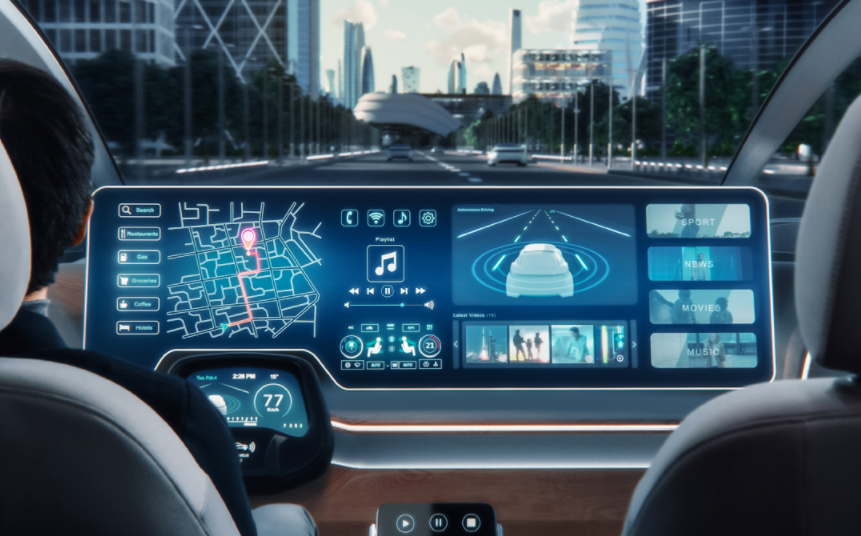2023/03/13
The LDO chip is a low-voltage differential linear regulator. With the development of vehicle electrification and intelligence, LDO is becoming more and more important in the design of on-board charge, especially in low-voltage applications such as on-board charge, on-board infotainment system, body control and automatic driving. The NSR3x series products are specifically designed for automotive battery charge systems. With its wide input voltage range, ultra-low static power consumption, multiple protection functions and multiple package forms, engineers have a new choice for the development of on-board application power modules.


Wide input voltage range
Different from consumer electronics such as computers and home appliances, automotive application scenarios are changeable, and the power supply voltage is prone to jump greatly under cold start and load throwing conditions. The international standard ISO 7637 is the electromagnetic compatibility standard set by the standardization organization for the automotive 12V and 24V power supply system, among which ISO 7637-2 is the test standard for the ability of the power module to cope with the transient voltage changes in the automotive application. It designs a series of transient voltage tests to simulate all the electrical failures that a car might encounter in a real-world application scenario, such as throwing loads. Many OEMs use the ISO 7637 standard for their designs, and some have adapted the standard to suit their own needs. ISO 7637 includes both electromagnetic tolerance and emission specifications for electromagnetic compatibility tests. These standards are set to allow OEMs to test power system designs for electrical faults before they leave the factory.
The complexity of automotive application scenarios requires a wide input voltage range for the LDO chip in the on-board power module to ensure the stability of the LDO output at the rear stage and prevent the LDO chip from being damaged due to power supply voltage fluctuations.
The NSR3x series LDO launched by NOVOSENSE is specially designed for automotive battery power supply system. It has a wide input voltage of 3V to 40V and supports transient voltage up to 45V. It can provide stable and reliable power input for LDO back-stage devices, so as to ensure that the function of the corresponding module can be correctly realized under various complex working conditions, and extend the service life of the corresponding module.
Ultra-low static power consumption
As one of the largest sources of carbon emissions, automotive have been developing towards the direction of energy conservation and emission reduction. Both new energy vehicles and traditional vehicles focus energy conservation. However, as new energy vehicles are powered by batteries, the current charging speed and charging facilities are not perfect, so the requirements for power consumption control of each component are higher. Functions such as induction wipers, automatic headlights and induction trunk are enabled only after starting conditions such as rain or darkness are triggered, and before the function is enabled, the power consumption should be kept as low as possible, which requires the static power consumption of chips such as LDO in the module to be low enough.
The current of NSR3x is only 270nA when it is turned off, and the typical static current value is 5uA when it is under low load. The typical static current value is 6uA when the external power supply reaches 0.2mA, so the power consumption performance in low power consumption mode is excellent. Using NSR3x to power MCU and CAN/LIN transceiver in standby system not only saves power, but also prolongs battery life, which is very suitable for applications that require high power consumption in standby system.
Multiple protection functions and high reliability
Vehicle components are often subjected to a variety of extreme temperatures and weather tests, such as high and low temperatures, heavy rain and great snow. Therefore, the working temperature range of automotive-qualified devices is much wider than that of consumer devices. Consumer electronic components generally work normally at 0°C to 70°C, but that requirement of automotive-qualified components is much higher, which can work normally in the temperature range of -40°C to 85°C. A device that surrounds a high-heat component, such as an engine requires to support applications at 125°C.
In addition, the emphasis on safety and reliability in automotive applications requires that LDOs have self-protection capabilities to cope with unexpected situations in complex and harsh applications. For example, a short circuit of the LDO output to the ground due to a short circuit in the connector or solder slip poses a significant risk. If the circuit is not protected, a surge of current will cause the LDO to burn out and create other safety risks.
The NSR3x can work normally at ambient temperatures ranging from -40 °C to 125 °C, and it has integrated short-circuit protection and overtemperature protection functions to ensure that modules designed using the NSR3x can work properly in various scenarios.
Multiple package options available for easy design
In the automotive-qualified LDO applications, attention should be paid to heat dissipation. Since the automotive-qualified LDO is usually used in modules with poor air flow or even no airflow at all, if the heat dissipation is not good enough, the LDO and its modules will heat up quickly when the ambient temperature is high. Therefore, it is important to choose the appropriate package for the application and do a good job of heat dissipation.
The NSR3x series comes with three products. The NSR31 has a maximum output current of 150mA, the NSR33 has a maximum output current of 300mA, and the NSR35 has a maximum output current of 500mA. According to different current output capacity, NOVOSENSE optimizes packaging and heat dissipation design, providing various packages including SOT223, SOT23, DFN-8, MSOP-8EP, SOP-8EP, TO252 and TO263. Users can choose the corresponding package according to the actual application to optimize the heat dissipation and size design of the whole module, and determine the structure design, circuit board layout and wiring according to the selected package for high performance and cost saving.
Sample application
For sample application or order, please email to sales@novosns.com, or call 0086-512-62601802-810.